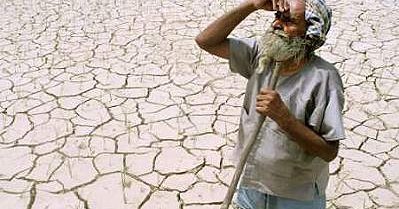Experts point out that by 2080, 150-200 million people will have become environmental refugees forced to migrate because of environmental phenomena. As regions under risk are considered Africa, Asia and M. East. The fact that small and developing countries with the less participation in the rates of green-house’s gas emissions, will feel the first effects of climate change is an irony of fate. [1]
Seas’ water-level’s anode, stronger tropical cyclones and precipitations, more drought are the probable consequences which will vary at every longitude and latitude and which draw our attention to regions near the coast, crowded, droughty but also to regions of South East Asia where big percentages of humidity and monsoon are observed. The researchers estimate that sea’s levels will go up from 18 to 59 centilitres maximum until the end of the century, fact directly related to green house’s gases’ emissions.
A significant rise in sea’s water-level could cause the migration of tens or even hundreds millions of people. For instance, an anode of 45 centilitres in Bangladesh will lead to the disappearance from this world of the 11% of its territory and as a result the forced displacement of about 5.5 millions people. Different kinds of risks are related to the green-house phenomenon.
In some areas of this world is, already, observed a diminution of cultivable extents, multiplication of flow’s of waters intermission, decrease of the deposits of food and fishes, increase of inundation and prolongation of drought’s periods. There are areas where the deposits of drink water can be reduced by 30%, fact which is going to provoke the increase of the raw materials’ price as well as social problems. In Hellenic Republic, the southern parts of the country will be affected as regards the crops, the deposits of drink water, the tourist season etc. since will be more burning heat and drought. [2]
Environmental refugees have until now not been recognised as refugees according to the international law and thus they cannot claim their rights for social welfare, protection or asylum.
According to recent scientific studies, although the low-lying coastal areas cover only the 2% of the earth’s surface, are the 10% of earth’s human population. The islands of Caribbean sea, Central America and the eastern coasts of China and India will be the first areas to be affected. Moreover, in many countries, residents of the hinderland will be faced with serious problems and difficulties if they live close to rivers’ valleys where the irrigation systems are fed by the ice melting and the thawling and that’s because the annual runoff from the thawling takes place earlier every year making more difficult the simultaneity of this appearance with the summer period. [3]
It is about a series of social, financial and geopolitical consequences for geostrategical changes of a circumference that global warming might cause: a vicious circle of disasters, migrations and territorial combats [4] that threaten the political stability of many countries and especially of those being already at the vestibule of dissolution. [5] Therefore, our attention should be turned at regions in danger while the application of the proper steps is becoming an urgent necessity.
There are regions that could be saved with the construction of a better substructure which could protect the population from tides or save water for the benefit of agriculture. People of other regions could be successfully occupied with the industry or the services’ sector instead of agriculture. Unfortunately, however, some areas may not be able to be adapted and, despite these efforts, its population will be obliged to move.
Some countries that already have problems because of the planet’s overheating ask for the recognition of this phenomenon as a reason for migration in international level. The Geneva Convention, adopted by the United Nations in 1951, doesn’t include the environmental refugees. According to the Convention, refugee is a person that is persecuted expulsion because of its tribe, religion, nationality, social class or political convictions.
The first who determined the environmental refugees’ existence was Essam El-Hinnawi when he worked at UNEP in 1985. [6] However, until now, they don’t have been recognised as refugees according to the international law and thus they cannot claim their rights for social welfare, protection or asylum. The definition of the right to asylum and humanitarian protection should include the historical, political and environmental changes of the last decades. El-Hinnawi, in particular, indicate that a new category of refugees must be adopted by the United Nations since the provision of emergency aid in cases of natural disasters is not the solution.
According to the results of the scientific research “Stern” for the environmental changes’ financial consequences, the cost of facing the problem is significantly less than the cost of environmental consequences caused if we don’t do anything. [7] A critical factor for the future solution of the problem is the decrease of green-house’s gasses. The difficulty lies in the innate inertia existed in the atmosphere. Whatever measures we take for the problem’s solution, we are going to subsist environmental change to some extent as the gasses released in our days will contribute at planet’s overheating the following years. For all these reasons, the taking measures for the problem’s facing and the fitting on any facts cannot be behind the time any more.


Follow the comments: |
|
